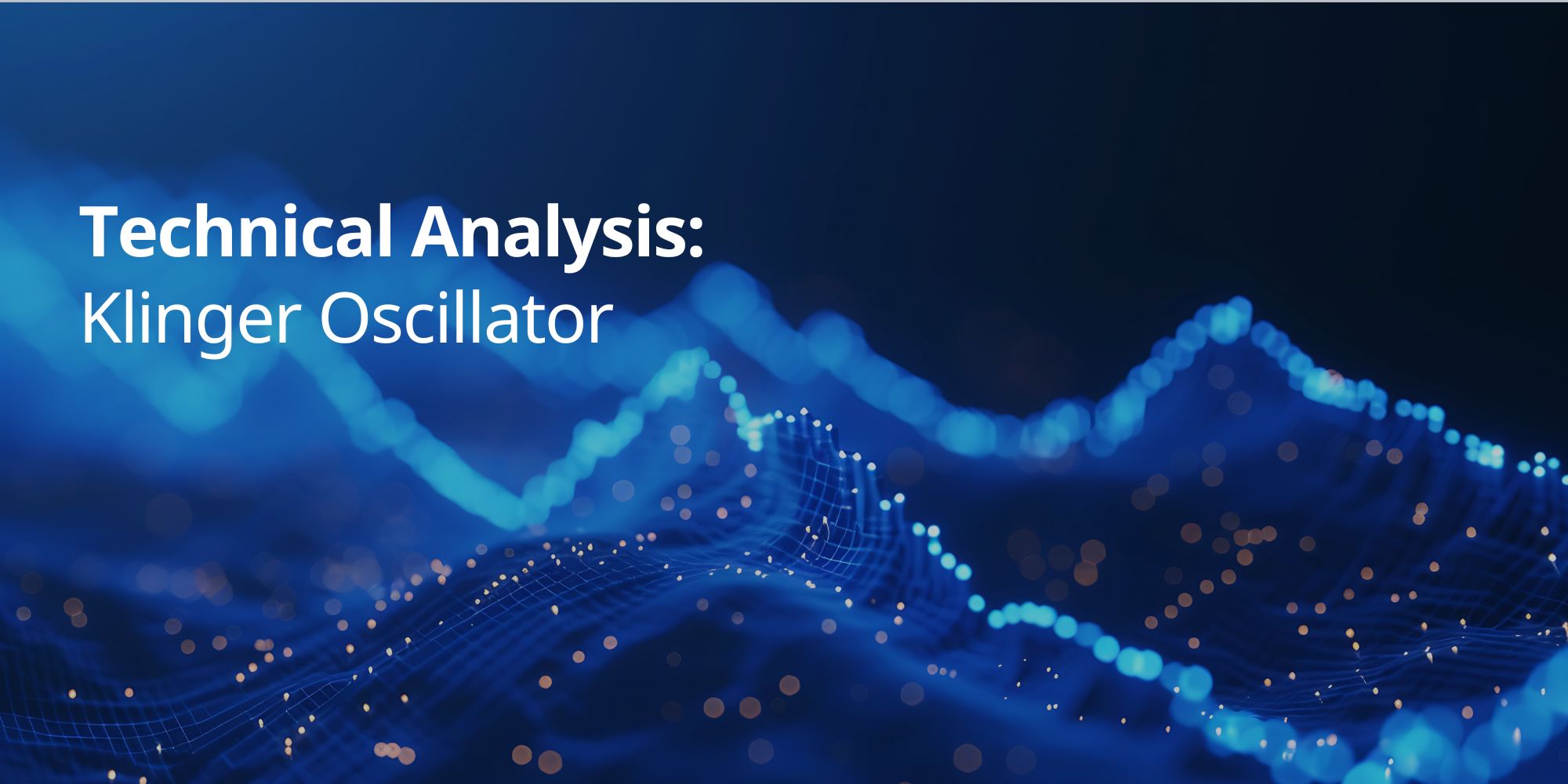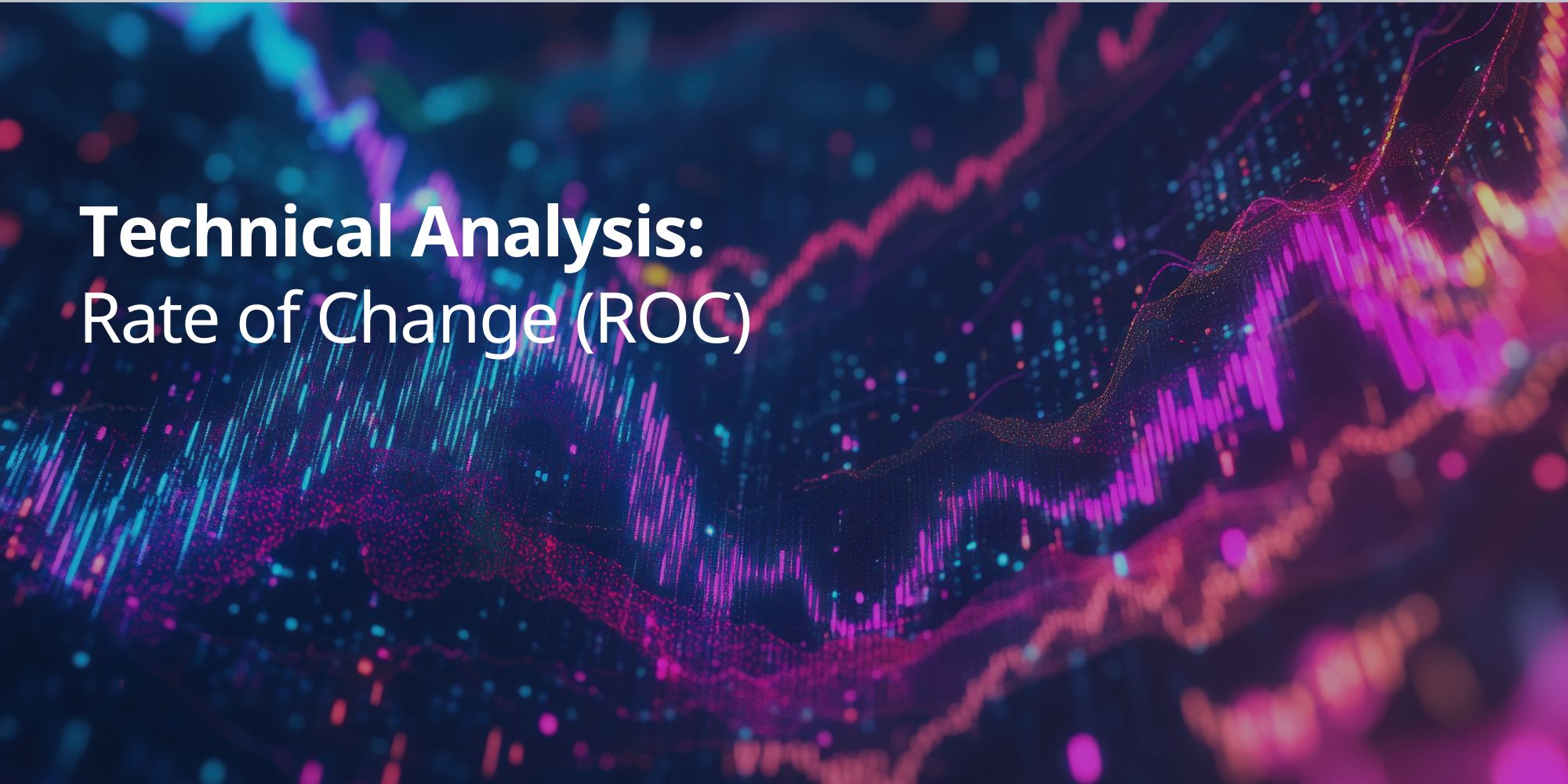Introduction
Volume is a crucial element in technical analysis, providing valuable insights into the strength and conviction behind price movements. The Klinger Oscillator is a powerful indicator that helps traders analyze volume in relation to price action, offering a deeper understanding of market dynamics and potential trading opportunities.
This comprehensive guide from Plexytrade explores the Klinger Oscillator in detail. We’ll cover its definition, calculation, interpretation, and practical applications in trading. Learn how to use this valuable tool to identify trends, confirm signals, and make more informed decisions in the financial markets.
Want to understand how volume affects price movements in the market? The Klinger Oscillator is a valuable tool that can help. This volume-based indicator combines price action and volume data to provide insights into trends, momentum, and potential buying and selling opportunities.
In this comprehensive guide, we’ll explore the Klinger Oscillator in detail, covering its definition, calculation, interpretation, and practical applications in trading. Learn how to use this powerful indicator to enhance your trading strategies and make more informed decisions in the financial markets.
What Is The Klinger Oscillator?
The Klinger Oscillator is a technical indicator that combines price and volume data to measure the strength of a trend and identify potential turning points in the market. It was developed by Stephen Klinger in the late 1970s.
What Is The Importance Of The Klinger Oscillator?
Volume is a crucial element in technical analysis. It provides insights into the strength and conviction behind price movements. The Klinger Oscillator is a valuable tool that helps traders analyze volume in relation to price action.
Here’s why the Klinger Oscillator is important:
- Trend Identification: The Klinger Oscillator can help identify the direction and strength of a trend. A rising oscillator suggests increasing buying pressure and a potential uptrend, while a falling oscillator indicates selling pressure and a potential downtrend.
- Confirmation of Signals: The Klinger Oscillator can be used to confirm signals from other technical indicators. For example, if a stock breaks out above a resistance level on high volume and the Klinger Oscillator also shows a surge in buying pressure, it strengthens the bullish signal.
- Filtering Out Noise: The Klinger Oscillator can help filter out market noise and focus on significant price movements. By incorporating volume data, it can distinguish between genuine trend changes and short-term fluctuations.
- Identifying Divergences: Divergences between the Klinger Oscillator and price action can signal potential trend reversals. For example, if the price is making new highs but the Klinger Oscillator is forming lower highs, it could indicate weakening momentum and a potential reversal.
- Understanding Market Sentiment: The Klinger Oscillator can provide insights into market sentiment. A rising oscillator suggests increasing optimism among traders, while a falling oscillator indicates growing pessimism.
How Does A Klinger Oscillator Work?
- Volume Force: The Klinger Oscillator uses a concept called “Volume Force” to measure the strength of buying or selling pressure. Volume Force takes into account both the volume and the direction of price changes.
- Exponential Moving Averages (EMAs): The Klinger Oscillator uses two exponential moving averages (EMAs) of the Volume Force: a 34-period EMA and a 55-period EMA.
- Signal Line: A signal line (typically a 13-period EMA of the Klinger Oscillator) is often used to generate trading signals.
What Is The Formula Of The Klinger Oscillator?
The Klinger Oscillator (KO) is calculated using a formula that combines price and volume data. While the full formula can be complex, here’s a simplified breakdown:
KO = [34-period EMA of Volume Force] – [55-period EMA of Volume Force]
- Volume Force: This is a measure of the strength of buying or selling pressure, taking into account both the volume and the direction of price changes.
- EMA: EMA stands for Exponential Moving Average. It’s a type of moving average that gives more weight to recent data points.
In simpler terms:
The Klinger Oscillator compares the short-term (34-period) trend of Volume Force to the longer-term (55-period) trend. This helps identify shifts in momentum and potential turning points in the market.
Why the Formula Matters
Understanding the formula helps you appreciate how the Klinger Oscillator incorporates both price and volume data to provide a more comprehensive view of market dynamics.
How To Trade With The Klinger Oscillator?
The Klinger Oscillator can be a valuable tool for making informed trading decisions. Here’s how you can use it in your trading strategy:
1. Identify the Trend:
- Oscillator above zero line: Suggests a bullish trend (potential uptrend).
- Oscillator below zero line: Suggests a bearish trend (potential downtrend).
- Strong upward movement: Indicates increasing buying pressure and potential for further price gains.
- Strong downward movement: Indicates increasing selling pressure and potential for further price declines.
2. Use the Signal Line:
The signal line is a moving average of the Klinger Oscillator (usually a 13-period EMA).
- Buy Signal: When the Klinger Oscillator crosses above the signal line, it can be a bullish signal, suggesting a potential entry point for a long trade.
- Sell Signal: When the Klinger Oscillator crosses below the signal line, it can be a bearish signal, suggesting a potential entry point for a short trade.
3. Spot Divergences:
- Bullish Divergence: Occurs when the price of an asset is making lower lows, but the Klinger Oscillator is making higher lows. This can signal a potential reversal to the upside.
- Bearish Divergence: Occurs when the price of an asset is making higher highs, but the Klinger Oscillator is making lower highs. This can signal a potential reversal to the downside.
4. Combine with Other Indicators:
Use the Klinger Oscillator in conjunction with other technical indicators to confirm signals and improve your trading decisions. For example, you might combine it with a moving average crossover or a momentum oscillator.
5. Consider Market Context:
Always interpret the Klinger Oscillator’s signals in the context of the overall market environment. Consider factors such as news events, economic data releases, and the broader market trend when making trading decisions.
Plexytrade provides access to the Klinger Oscillator and a wide range of other technical indicators on its advanced trading platforms. Our educational resources and market insights can help you learn how to use these tools effectively and enhance your trading strategies.
What Differentiates Klinger Oscillator From Other Volume Oscillators?
The Klinger Oscillator stands out from other volume oscillators in a few key ways:
- Focus on Absolute Price Change: The Klinger Oscillator uses the absolute value of price changes in its calculation. This means it considers the magnitude of price movements regardless of whether the price is going up or down. This helps to provide a clearer picture of the strength of buying or selling pressure.
- Two Exponential Moving Averages: The Klinger Oscillator uses two EMAs of Volume Force (a 34-period EMA and a 55-period EMA) to identify shifts in momentum and potential turning points. This dual EMA approach helps to filter out noise and identify more significant trends.
- Combined Price and Volume Analysis: While other volume indicators, such as the Chaikin Money Flow or On-Balance Volume, primarily focus on volume, the Klinger Oscillator explicitly incorporates price action into its calculation. This provides a more comprehensive view of market dynamics.
Benefits of the Klinger Oscillator’s Unique Features:
- Reduced Noise: By using absolute price changes and two EMAs, the Klinger Oscillator helps to filter out market noise and focus on more significant trends.
- Improved Accuracy: The combination of price and volume data can lead to more accurate signals and a better understanding of market sentiment.
- Enhanced Trading Decisions: The Klinger Oscillator’s unique features can help traders identify trends, confirm breakouts, and spot divergences, and make more informed trading decisions.
How To Calculate The Klinger Oscillator?
While the full calculation of the Klinger Oscillator can be complex, here’s a simplified breakdown of the steps involved:
- Calculate the Typical Price: The typical price is the average of the high, low, and closing prices for a given period (usually a day).
- Calculate the Volume Force: Volume Force is a measure of the strength of buying or selling pressure. It’s calculated by multiplying the volume by a factor that considers the relationship between today’s typical price and yesterday’s typical price.
- Calculate Exponential Moving Averages (EMAs): Calculate two EMAs of the Volume Force: a 34-period EMA and a 55-period EMA. These EMAs help smooth out the data and identify trends.
- Subtract the EMAs: Subtract the 55-period EMA of Volume Force from the 34-period EMA of Volume Force. The result is the Klinger Oscillator value.
Interpreting the Results:
- Positive values: Indicate bullish momentum (buying pressure).
- Negative values: Indicate bearish momentum (selling pressure).
- Crossovers of the signal line: Can be used to generate buy and sell signals.
- Divergences with price: Can signal potential trend reversals.
What Are The Settings For The Klinger Oscillator?
The Klinger Oscillator typically uses the following settings:
- 34-period EMA: This is the shorter-term EMA used to calculate the oscillator.
- 55-period EMA: This is the longer-term EMA used in the calculation.
- 13-period EMA: This is often used as a signal line to generate trading signals.
Customization Options:
While these are the most common settings, traders can customize the periods of the EMAs to suit their trading style and the timeframe they’re analyzing.
- Shorter Periods: Using shorter periods for the EMAs (e.g., 13-period and 21-period) can make the oscillator more sensitive to short-term price movements. This can be useful for day traders or scalpers who are looking for quick trading opportunities.
- Longer Periods: Using longer periods for the EMAs (e.g., 50-period and 200-period) can make the oscillator less sensitive to short-term fluctuations and more focused on longer-term trends. This can be helpful for swing traders or investors with a longer-term outlook.
Which Trading Strategies Work Best With Klinger Oscillator?
While the Klinger Oscillator can be a powerful tool on its own, combining it with other indicators and trading strategies can enhance its effectiveness and improve your trading decisions.
Here are some strategies that work well with the Klinger Oscillator:
- Trend-Following Strategies: The Klinger Oscillator can help identify and confirm trends. Use it in conjunction with other trend-following indicators, such as moving averages or MACD, to enter trades in the direction of the prevailing trend.
- Momentum Strategies: The Klinger Oscillator can also be used to identify momentum shifts and potential breakouts. Look for divergences between the oscillator and price action to anticipate potential trend reversals or continuations.
- Swing Trading: The Klinger Oscillator can be effective for swing trading, which involves capturing short- to medium-term price swings within a trend. Use the oscillator to identify entry and exit points based on changes in momentum and volume.
- Combining with Other Indicators: Combine the Klinger Oscillator with other indicators, such as the RSI or Stochastic Oscillator, to confirm signals and filter out false signals. For example, a buy signal generated by the Klinger Oscillator might be strengthened if the RSI also shows bullish momentum.
Example: If the Klinger Oscillator shows a strong upward movement, confirming an uptrend, and the MACD also generates a bullish crossover signal, it could be a strong indication to enter a long trade.
What Are The Limitations Of Klinger Oscillator?
While the Klinger Oscillator is a valuable technical indicator, it’s essential to be aware of its limitations:
- False Signals: Like any technical indicator, the Klinger Oscillator can generate false signals, especially in volatile or choppy market conditions. This can lead to premature entries or exits if traders rely solely on the oscillator’s signals.
- Lagging Indicator: The Klinger Oscillator uses exponential moving averages (EMAs) in its calculation. EMAs are lagging indicators, meaning they are based on past price data. This can sometimes cause the Klinger Oscillator to react slowly to sudden price changes or trend reversals.
- Sensitivity to Short-Term Fluctuations: The Klinger Oscillator can be sensitive to short-term price fluctuations and volume spikes, which might not necessarily reflect a significant change in the underlying trend. This can lead to whipsaws or false signals if traders are not careful.
- Not a Standalone Indicator: The Klinger Oscillator is most effective when used in conjunction with other technical indicators and price action analysis. Relying solely on the oscillator can lead to misinterpretations of market conditions and potentially unprofitable trades.
Mitigating the Limitations
To overcome these limitations, traders can:
- Combine with Other Indicators: Use the Klinger Oscillator in conjunction with other technical indicators, such as moving averages, trend lines, or momentum oscillators, to confirm signals and filter out false signals.
- Consider Market Context: Always interpret the Klinger Oscillator’s signals in the context of the overall market environment. Consider factors such as news events, economic data releases, and the broader market trend when making trading decisions.
- Practice Risk Management: Use appropriate risk management techniques, such as stop-loss orders and position sizing, to limit potential losses.
Conclusion
The Klinger Oscillator is a valuable addition to any trader’s toolkit. By combining price and volume data, this indicator provides unique insights into market momentum, trend strength, and potential reversals.
Plexytrade equips you with the resources you need to effectively incorporate the Klinger Oscillator into your trading strategy. Our advanced trading platforms, educational materials, and market insights empower you to:
- Analyze the Klinger Oscillator and interpret its signals.
- Identify trends, confirm breakouts and spot divergences.
- Combine the Klinger Oscillator with other indicators for a comprehensive view of the market.
- Make informed trading decisions based on volume and price dynamics.
Ready to enhance your trading skills? Sign up with Plexytrade.com today and unlock the power of the Klinger Oscillator.















